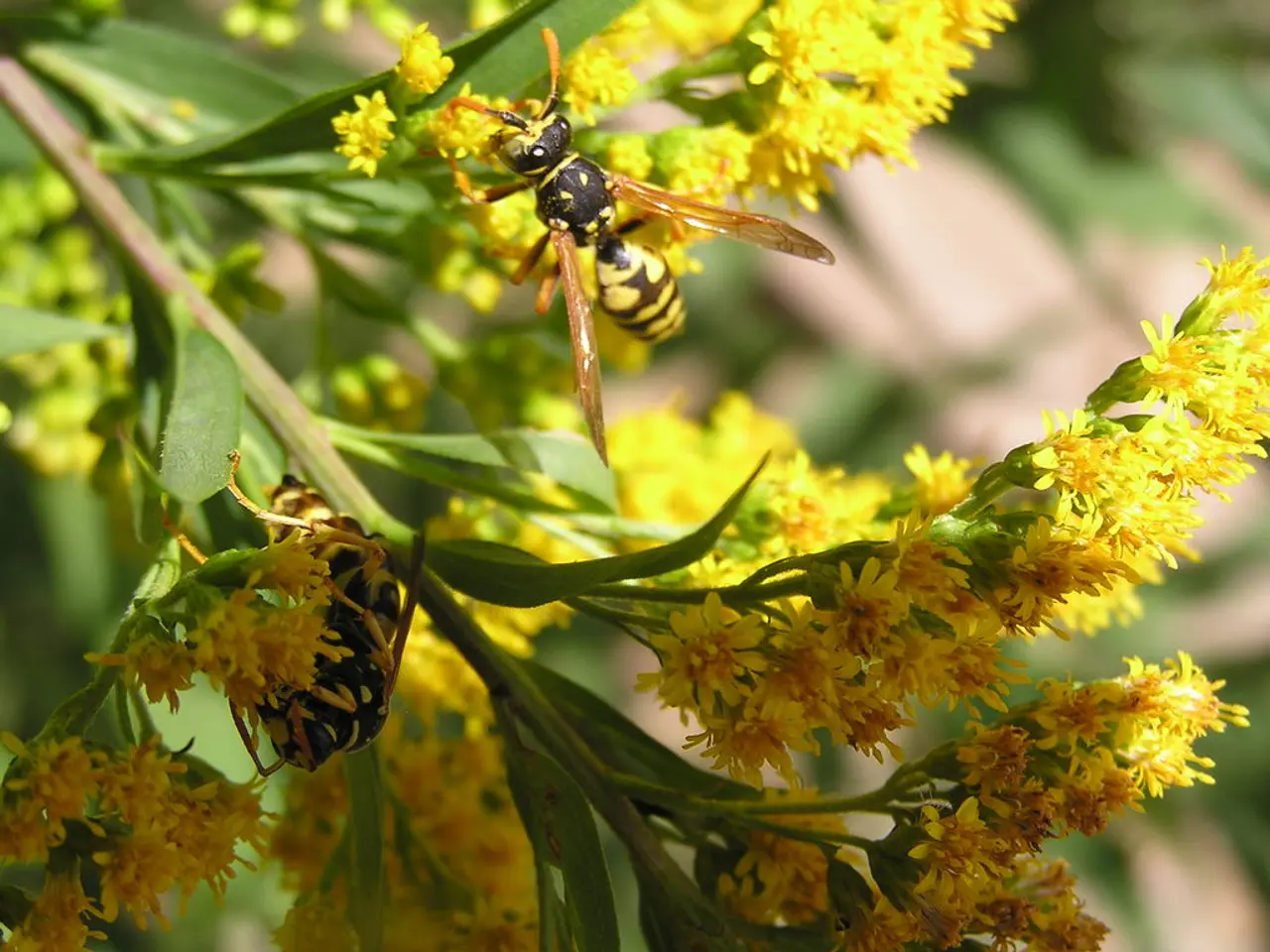Protecting Your Greens Naturally: Home Items to Shield Your Floral Friends from Pests
In the quest for a greener and safer gardening approach, household products such as hydrogen peroxide, diatomaceous earth, neem oil, and insecticidal soap can be effectively used to eliminate pests in plant soil. Here's a guide to help you make the most of these eco-friendly solutions.
Hydrogen Peroxide: This common household item, when diluted correctly, can oxygenate the soil and kill pests such as larvae, fungus gnats, and other unwanted critters without harming plants. To use hydrogen peroxide, mix a 3% solution with water (approximately one part hydrogen peroxide to four parts water) and drench the soil. Water the plant every few days as needed, but be cautious not to overuse to prevent root damage.
Diatomaceous Earth (DE): Food-grade DE is a safe and non-toxic option for plants and humans, as well as pets. This finely ground powder, made from fossilized algae, works by damaging insects' exoskeletons, causing them to dehydrate and die. To apply DE, lightly sprinkle it on the surface of the soil and plants if needed. Apply when the soil and plants are dry to maximize its effectiveness. DE is best used for crawling insects such as ants, beetles, and soil pests in vegetable and flower gardens.
Neem Oil: An organic, natural pesticide derived from the neem tree, neem oil suffocates pests like spider mites and other bugs at all life stages. To make a neem oil solution, mix one tablespoon of neem oil, a few drops of mild dish soap, and warm water in a spray bottle. Thoroughly spray the soil surface and the undersides of leaves early in the morning or late in the evening to prevent leaf burn. Repeat the application every few days over a couple of weeks for full control.
Insecticidal Soap: Commercial insecticidal soap or homemade soap solutions (e.g., mild Castile soap) work by disrupting insect cell membranes, effectively killing soft-bodied insects. Spray the infested plant leaves and soil surface directly, focusing on pests you can see. Avoid spraying during the peak sun to prevent leaf damage. Insecticidal soap is less toxic but can harm beneficial insects if sprayed directly on them, so apply carefully.
Combining Strategies: It is often best to use these products as part of an Integrated Pest Management (IPM) approach, combining physical barriers (e.g., netting), cultural practices, and targeted use of these substances. Always monitor soil moisture and pest presence, reapplying treatments when necessary. Follow label instructions and avoid overuse to protect beneficial soil microbes and overall plant health.
In summary, these household products offer effective, eco-friendly solutions for pest control in plant soil. Diluted hydrogen peroxide can treat soil pests without harming roots, food-grade diatomaceous earth kills crawling insects when dry, neem oil sprays effectively suffocate various pests including those in soil, and insecticidal soaps target soft-bodied insects with minimal toxicity when used properly.
Home-and-garden enthusiasts can incorporate hydrogen peroxide into their gardening routines, using it to oxygenate soil and eliminate pests. Likewise, diatomaceous earth (DE) can be applied as a safe and non-toxic option for protecting plants from crawling insects, particularly in vegetable and flower gardens. Furthermore, neem oil can be used in organic gardening to suffocate various pests, including those found in soil, while insecticidal soap treats soft-bodied insects with minimal toxicity when sprayed properly.




